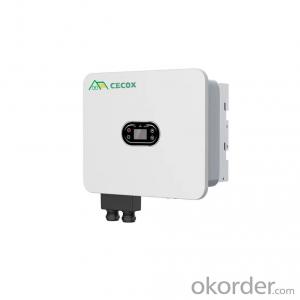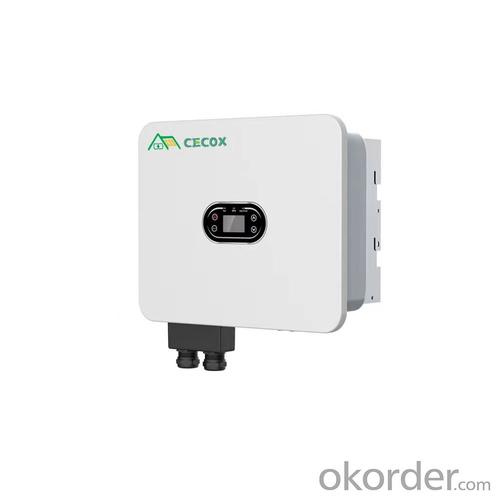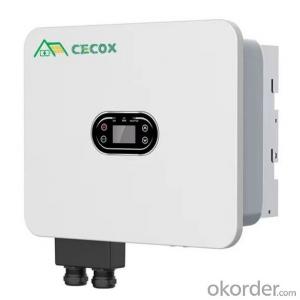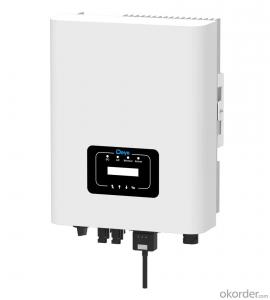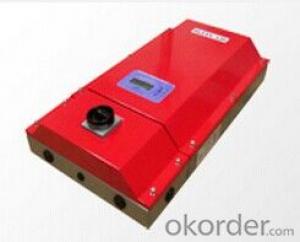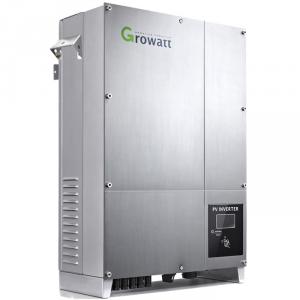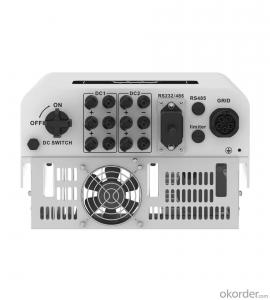Three Phase AC DC Hybrid Solar Inverter 5KVA-12KVA/8-19.2KW
- Loading Port:
- China main port
- Payment Terms:
- TT or LC
- Min Order Qty:
- 1000 unit
- Supply Capability:
- 10000 unit/month
OKorder Service Pledge
OKorder Financial Service
You Might Also Like
Specification
Key Parameters
Output Type:Triple, Pure Sine Wave
Type:DC/AC Inverters
Inverter Efficiency:98.2%
Other attributes
Model Number:XD5KTR, XD6KTR, XD8KTR, XD10KTR, XD12KTR
Input Voltage:160V~800V DC
Output Voltage:230V / 400V AC
Output Current:21.7A~52A
Output Frequency:50Hz / 60Hz
Size:534W*440H*220D mm
Certificate:CE/IEC/ISO/TUV
Warranty:5 years
Weight:30kg
Product Name:DC AC Hybrid Solar Inverter(With Storage)
Battery Type:Lithium/Lead-acid
Rated Power:5000~12000W
Waveform:Pure Sine Wave
Power Factor:0.8 leading~0.8 lagging
Max. PV Input Power:8~19.2kW
Max. PV Input Voltage:1100V
Max. PV Input Current:20A
Communication:RS485 / CAN / WIFI / 4G / LAN / Bluetooth
Packaging and delivery
Package Type:Standard Export Package
Supply Ability:10000 Piece/Pieces per Month
Lead time
Quantity (pieces)1 - 100 101 - 500 501 - 1000 > 1000
Lead time (days) 7 14 21 To be negotiated
Customized packaging
- Q: How does a solar inverter handle variations in grid frequency?
- A solar inverter handles variations in grid frequency by constantly monitoring the frequency of the grid and adjusting its own output accordingly. It does this through a process called frequency synchronization, where it synchronizes its output frequency with the grid frequency. This allows the solar inverter to seamlessly adapt to any changes in grid frequency, ensuring a stable and reliable power supply to the connected solar panels or the grid.
- Q: How does a solar inverter convert DC to AC?
- A solar inverter converts direct current (DC) electricity generated by solar panels into alternating current (AC) electricity that can be used to power appliances and feed into the electrical grid. It does this by using a complex electronic circuit that first converts the DC power into high-frequency AC power. This high-frequency AC power is then transformed into the desired voltage and frequency of standard AC power using pulse-width modulation techniques. The converted AC power can then be utilized for various household or commercial electrical needs.
- Q: How long does a solar inverter last?
- A solar inverter typically has a lifespan of around 10 to 15 years, although this can vary depending on various factors such as the quality of the inverter, its usage, and maintenance.
- Q: How does a solar inverter handle variations in solar panel degradation over time?
- A solar inverter handles variations in solar panel degradation over time by continuously monitoring the power output of the solar panels and adjusting its operations accordingly. As solar panels degrade over time, their efficiency decreases, resulting in a decrease in power output. The inverter detects this decrease and adapts its operation to maximize the power conversion and maintain optimal performance. This ensures that the solar energy harvested from the panels is efficiently converted and utilized, despite variations in panel degradation.
- Q: What is the role of a power monitoring feature in a solar inverter?
- The role of a power monitoring feature in a solar inverter is to constantly monitor and measure the amount of power being generated by the solar panels. This feature allows users to track the performance of their solar system, detect any issues or malfunctions, and optimize the energy output for maximum efficiency. It provides real-time data on the power production, enabling users to make informed decisions regarding energy usage and grid integration.
- Q: The working principle of photovoltaic grid - connected inverter
- Inverter will be converted into alternating current DC, if the DC voltage is low, then through the AC transformer boost, that is, the standard AC voltage and frequency. For large-capacity inverter, because the DC bus voltage is high, AC output generally does not require transformer boost that can reach 220V, in the small and medium capacity of the inverter, because the DC voltage is low, such as 12V, 24V, It is necessary to design a boost circuit.
- Q: Can a solar inverter be used in locations with high humidity or extreme temperatures?
- Yes, solar inverters can be used in locations with high humidity or extreme temperatures. However, it is important to choose an inverter specifically designed for such conditions. High-quality inverters are built to withstand these environmental factors and often have protection features to ensure reliable performance and longevity in harsh climates.
- Q: What is the role of a voltage control unit in a solar inverter?
- The role of a voltage control unit in a solar inverter is to regulate and stabilize the voltage output from the solar panels, ensuring that it matches the required voltage for the connected electrical devices or grid connection. This unit helps to maximize the efficiency of the solar inverter and prevent any potential damage to the electrical system by maintaining a consistent and optimal voltage level.
- Q: Can a solar inverter be used in systems with different module types?
- Yes, a solar inverter can be used in systems with different module types. Solar inverters are designed to convert the direct current (DC) generated by the solar panels into alternating current (AC) that can be used to power various household appliances and be fed into the electrical grid. They are typically compatible with a wide range of module types, including monocrystalline, polycrystalline, and thin-film solar panels. However, it is important to ensure that the inverter's specifications and capacity align with the specific module types being used to ensure optimal performance and efficiency.
- Q: Can a solar inverter be used in areas with limited roof space or installation options?
- Yes, a solar inverter can be used in areas with limited roof space or installation options. Solar inverters are flexible and can be installed in various locations such as walls, ground mounts, or even on poles, allowing for more flexibility in terms of space and installation options. Additionally, there are also compact and space-saving solar inverters available that can be used in areas with limited roof space.
Send your message to us
Three Phase AC DC Hybrid Solar Inverter 5KVA-12KVA/8-19.2KW
- Loading Port:
- China main port
- Payment Terms:
- TT or LC
- Min Order Qty:
- 1000 unit
- Supply Capability:
- 10000 unit/month
OKorder Service Pledge
OKorder Financial Service
Similar products
Hot products
Hot Searches
Related keywords
